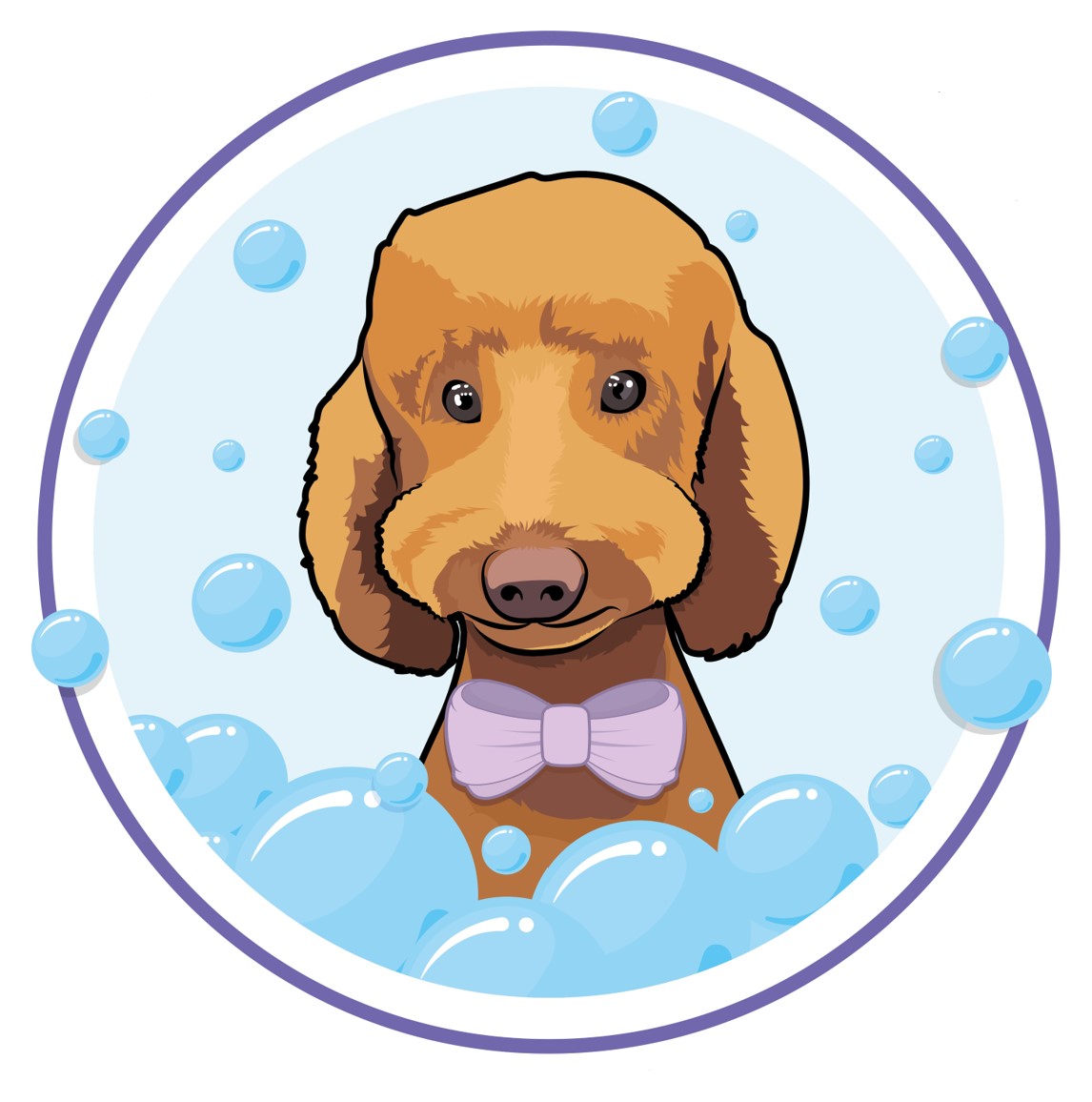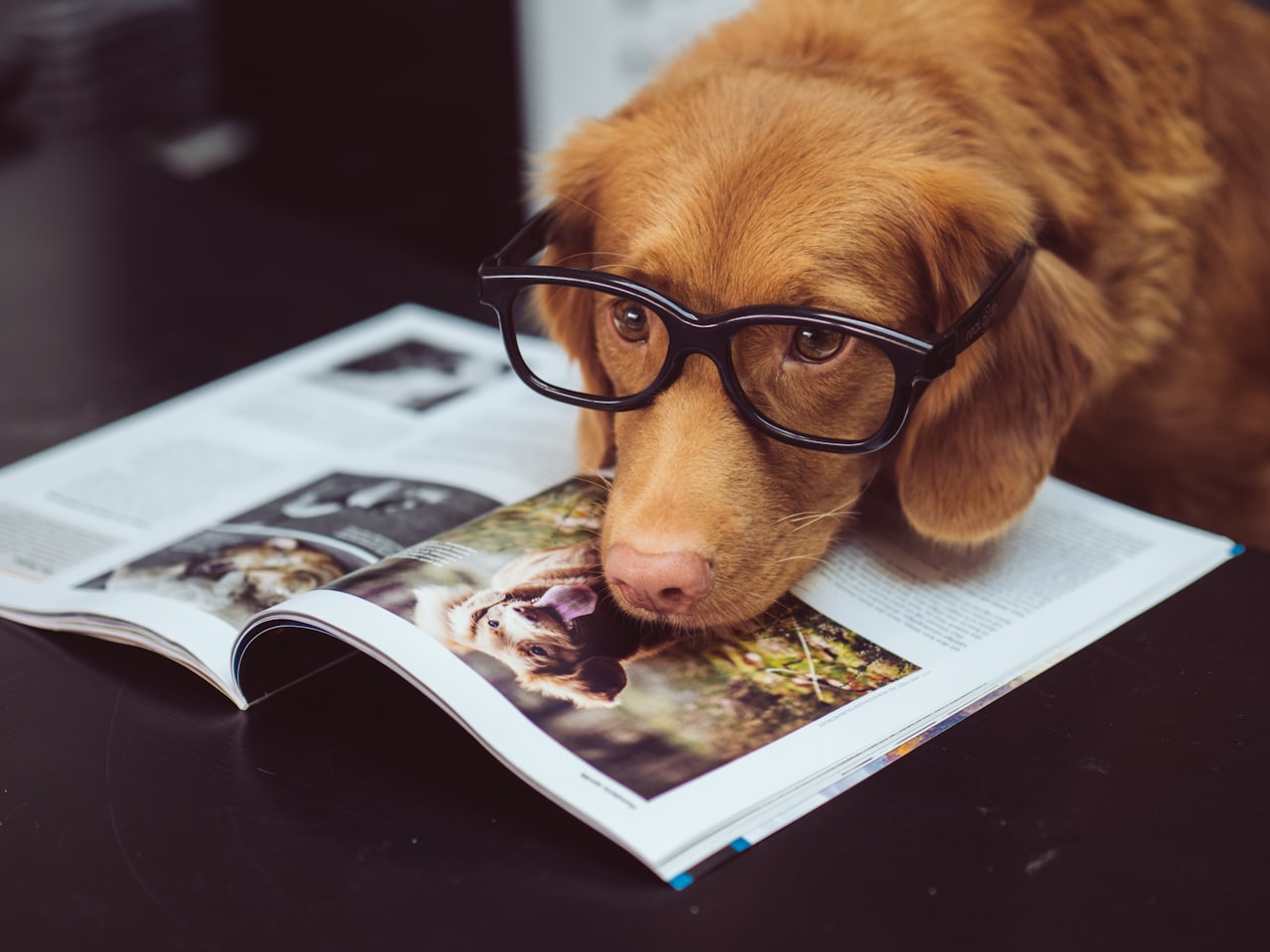
Advice and tips
A little helping hand to keep your dog pawfectly healthy and happy
Some of the benefits of taking your dog to a professional dog groomer are not just the direct benefits to the condition of your dog’s coat and skin. Dog groomers can also help detect ear and eye problems, and spot lumps and bumps. The more I get to know each dog I will be in a better position to notice any changes in their health and wellbeing and inform you of these. As well as attending to a dog’s coat, skin, ears and eyes, I can also attend to their paws and nails. There are significant potential health benefits to bringing your dog in for a ‘pawdicure’ if their nails are overgrown, these can include: better grip; preventing nails from breaking and/or growing incorrectly; relieving discomfort or pain from standing or walking on long clawed paws; reducing the risk of developing infections and longer-term mobility, bone & joint problems. Grooming also helps socialise younger dogs by exposing them to a new environment, sensations and smells and; being handled by a stranger teaches them how to behave in these situations.
Preparing your dog to come to Scruffy to Fluffy Dog Spa
- Please do not feed your dog in the 2 hours prior to their appointment time, this is because it puts your dog at risk of bloating and gastric torsion (ask your Vet). They can drink as normal and I will provide them with fresh water too.
- Please give your dog some exercise before coming into the Spa – just enough to take the edge of any excitement or nervous energy; not too much that they are fatigued when they arrive.
- Please toilet your dog before coming into the Spa. Accidents happen but your dog will be more comfortable and at ease if they have been toileted before their appointment.
Understanding your dog’s coat and their grooming needs
Did you know that the UK Kennel Club currently recognises 222 pedigree dog breeds? The majority of these are most easily recognised by their coats. Whether they’re long, medium or short coated, double or single coated, or have coats that are curly, silky, smooth, wire or rough, it’s safe to say that a dog’s coat is its most defining feature!
Fur serves a purpose greater than just cuteness. Between body temperature regulation and skin protection from cuts and scratches, there are multiple ways your dog’s coat supports their everyday needs. Understanding your dog’s coat is important when it comes to providing them with the best grooming care for a healthy lifestyle.
Whatever their coat type nearly all dogs will benefit from brushing as it will help regulate body temperature and reduce itching as you remove dead hair and distribute natural oils. Regular brushing will help you bond with your dog as well as getting to know their skin better, which means you’ll find any parasites and skin conditions sooner rather than later.
Determining whether your dog does need a bath often depends on the lifestyle of the dog not just the coat type. The most common reasons for bathing include removing dirt and mud from the coat or improving the smell of the dog. However, no dog should be bathed too frequently (usually no more than once every 4 weeks, although there are a few exceptions) as this will remove the natural oils, making the coat prone to becoming dry and sometimes leading to irritation.
We’ve put together this guide to managing the main coat types, including top tips for you to follow at home and, our recommendations for what services to book with Scruffy to Fluffy Dog Spa so that we can support you and your dog. Remember that mixed breed dogs have unique coat types so you’ll need to tailor this general advice to their individual coat mix.
We hope that all pawrents find this information helpful and we look forward to discussing this further with you when you and your dog have a consultation at the Scruffy to Fluffy Dog Spa.
Smooth – Short Coats (click to read more…)
Breeds include: French Bulldog, Greyhound, Whippet, Boxers, Pug, Dachshund – smooth, Beagle, Labrador Retriever.
You may hear the terms “short-coated” and “smooth-coated” used interchangeably, and that’s because this hair type is best described as both short and smooth! With hair that lies close to the body, the coat is sleek and shiny, almost like the dog is covered with silky skin rather than fur. Some short coat breeds can be prone to sensitive skin. Natural body oils can create that ‘doggie odour’ and a film can be felt if the dog is dirty.
A smooth coat is the easiest to maintain; it doesn’t need clipping or cutting due to its natural short length and its density maintains optimal temperatures during winter. The downside is that smooth coated dogs tend to shed heavily. Ways to stay on top of shedding is to feed your dog a healthy diet (raw is often recommended but talk to your vet), and regularly brush the coat a few times/week.
Brushing short coats
Brushing dogs with shorter hair will feel similar to being petted, so it’s likely that your dog will be pretty happy about this! Take your time and be gentle. There are a few brushes that you could try: use a double sided soft brush all over to remove dirt and hair. The bristle side can be used to remove mud; alternatively try a slicker brush. Finish off with a grooming glove to distribute oils through the coat.
How can Scruffy to Fluffy Dog Spa help you manage short coats?
You cannot stop your dog shedding it’s coat, it’s a natural and necessary cycle. However, we can help you manage this. A few times a year, particularly at times when shedding is heavier than usual or more difficult for you to manage at home we’d recommend you book our popular specialist deshed package – please pick the specific option for short haired coats. We use specialist deshed shampoo and you also have the option of adding an amazing deshed mud mask too. These products along with our specialist tools/brushes and, the super power of our high velocity blaster dryer, enables us to remove as much excess fur as possible (meaning there’ll be lots of it left in the spa but much less of it in your home!). In between if your dog’s nails and paws require extra attention you can book them in for just a pawdicure appointment at any time they need it.
Rough & wire coats (click to read more…)
Breeds Include: Airedale Terrier, Border Terrier, Cairn Terrier, Irish Terrier, Schnauzer, Welsh Terrier, West Highland White, Irish Wolfhound, Jack Russell.
Rough and wire coated dogs have ‘rough’ feeling coats don’t shed. They require a unique type of grooming called ‘hand stripping’ due to their lack of shedding. Hand stripping is a process where excesses dead topcoat is manually plucked / pulled from the coat in order to keep the coat tidy, healthy and strong. This type of coat is very durable in winter: it’s hard wearing, water-repellent and highly insulating so wire coated breeds are well equipped for the colder months.
Brushing rough and wire coats
Outside of their twice-yearly hand stripping treatment, they should be brushed weekly with a pin brush.
How can Scruffy to Fluffy Dog Spa help you manage rough and wire coats? We are sorry but we do not currently offer a ‘hand stripping’ service. However, if you wish to have you dog handstripped elsewhere and bring them us to be bathed occasionally then we recommend you book our essential ‘Squeaky Clean’ package so your dog comes away smelling fresh as a daisy! We can also offer a pawdicure appointment whenever your dog’s nails and paws need some attention.
Long (or drop) coats (click to read more…)
Breeds Include: Lhasa Apso, Havanese, Maltese, Shih Tzu, Yorkshire Terrier, Pekingese, Golden Retriever.
Long coats are continually growing and considered low shedding. Long coated breeds can have hair so long that it sometimes reaches the floor! Their coats do require a lot of effort to maintain. If this coat type is not brushed/combed frequently it will quickly become problematic, causing poor air circulation to the skin which in turn will become inflamed and/or infected.
Brushing long coats
Brushing/combing is required at least three times a week but preferably daily, otherwise mats, knots and tangles will definitely form. You may want to use a good detangling spray to help when brushing.
How can Scruffy to Fluffy Dog Spa help you manage long coats?
Long or drop coated dogs generally need bathing every 4- 6 weeks, but this can vary depending on factors like coat length, skin condition and activity level. Over-bathing can strip their natural oils. While infrequent bathing can result in a dirty smelly coat. Long or drop coats benefit from our gentle moisturising shampoo and our good quality brushes that help with detangling, removing loose fur and, distributing the natural oils to add shine to this amazing coat. We also have coat sprays that are anti static, detangling and conditioning to give the best finish.
Breed standard for long coated breeds is as is, requiring only a trim. However, because of the level of grooming needed, pawrents of long-coated breeds often opt for “pet cuts,” where the long hair is tastefully bobbed for much easier maintenance. We can talk about your preference at your first consultation in the Spa.
Silky Coats (click to read more…)
Breeds include: Cocker Spaniel, Irish Setter, English Cocker Spaniel, English Springer Spaniel, Welsh Springer Spaniel.
Silky coat breeds have a combination of long, silky and short, smooth coat. Silky coats often have straight or slightly wavy hair that is very fine and soft and, they are usually single layered. You’ll find that silky coats usually shed twice a year so during these times brushing daily is recommended. The coat is usually very short and tight around the face, front of legs, body and rear of legs. There is a long, silky coat on undercarriage, rear of front legs, front side of rear legs and tail. Again, long, silky coats can mat, knot and tangle if not groomed frequently. Silky coats tend to retain less dirt than other coat types, but it’s still important to wipe them down after muddy winter walks and keep up a grooming schedule throughout the winter months.
Brushing silky coats
To keep a silky coat in the best condition, regular brushing (daily for some breeds to every other day for other breeds) is a must to remove dead hair and any tangles. For brushing a silky coat we recommend using a pin brush to groom the coat through. If the dog is shedding coat, a slicker brush will help remove any dead hair. Brush the hair through in the direction of the natural growth. Once brushed through with the slicker or pin brush, use a grooming comb to comb the coat and remove any remaining loose hair. When brushing/combing ensure the tummy area and between the legs is not missed. These areas are prone to tangles which if left unresolved, will become difficult to remove. If you find knots that will not brush out without causing discomfort to your dog, it may be necessary to comb the coat through with a dematter comb. Finally use a bristle brush to go over the coat and lay it flat in the direction of growth. This will encourage the natural oils in the coat and improve the overall condition.
How can Scruffy to Fluffy Dog Spa help you manage silky coats?
Silky coat types attract the most dirt and debris and because of this require more bathing (around once every six weeks) to stay in top condition. Silky coats can benefit from a degreasing or shine enhancing shampoo – we will decide what product is best for your dog once we’ve assessed their coat and spoke to you about the trim you would like. Regular trims help maintain silky coats, reducing the risk of developing tangles and mats. For working breeds like spaniels, who tend to love muddy puddles, you may prefer their coat to be clipped to help with maintenance.
When seasonally shedding or ‘blowing their coat’ (twice /year) we’d recommend that you book your silky coated dogs in with us for a deshed package. Otherwise please select one of our other packages depending on how much you would like your dog trimmed or, if you want them clipped. All our services and packages are outline in detail on this website to help you decide what is right for you and your silky coated dog. We can talk more at about your grooming preferences and your dog’s needs at your initial consultation.
Double Coats (click to read more…)
Breeds include: Golden Retriever, Border Collie, Pomeranian, Corgi, Samoyed.
A double coat is most often found on sled dogs and some working dogs, as well as some smaller breeds. As the name suggests there are two layers: the shiny outer coat (guard coat) which reflects the sun and repels the snow and rain and; the soft cotton wool like undercoat, which traps air and acts as an insulator during colder temperatures. The undercoat sheds continually throughout the year, with bigger bursts of shedding as the seasons and temperature change, The outer coat sheds much less and grows back more slowly. Seasonal shedding occurs year round with these breeds and can be profuse when ‘blowing their coat’ (which tends to happen about twice a year). The thick, fluffy fur is released and seems to spread everywhere! Natural body oils can create ‘doggie odour’ in some breeds with this coat type.
Brushing double coats
This coat type is quite high maintenance as it is easily tangles and develops mats as the two layers shed at different rates. A comprehensive brushing routine needs to be maintained at home. With your hand, or a comb, part the fur creating a vertical line and use a slicker to brush through the soft undercoat. This will remove any loose hair reducing the opportunity for mats and tangles to develop. Move through the entire coat using this technique and ensure the tummy area and between the legs is not missed. Many people use an undercoat rake to remove any hairs that are about to be shed. Once brushed through, use a grooming comb to comb the coat and remove any remaining loose hair. This will also identify any remaining knots or mats in the coat. It is essential to remove these knots on a regular basis to reduce the chances of large mats forming and causing increased problems. If you find knots that will not brush out without causing discomfort to your dog try using a dematter comb. Finally use a bristle brush or a grooming glove to go over the coat and lay it flat in the direction of growth. This will encourage the natural oils in the coat and improve the overall condition of this coat type.
How can Scruffy to Fluffy Dog Spa help you manage double coats?
Careful maintenance of this type of coat is needed not only to keep you’re your dog looking their best, but there are health benefits too. Double coats are designed to protect the dog from the elements and must be left completely natural, not styled. We do not recommend that double coated dogs are shaved.
As an absolute minimum we recommend that you book your double coated dog in with us twice/year to coincide with seasonal change and them ‘blowing their coat’. You can of course book them in for a deshed more regularly to keep on top of things with your dog and prevent matting from developing. Please select the specific deshed package for double coated dogs when booking an appointment so that we can fully meet your dog’s needs. In this package we use specialist high quality deshed shampoo and the correct deshedding tools and brushes, along with our super high velocity blast dryer. On occasion we may use deep cleansing shampoo if your double coated dog needs some help with ‘doggie odours’ which some breeds with this coat type are prone to.
We will give double coated dogs an appropriate hygiene trim and minimal body contour/silhouette trim in agreement with you. If your dog likes sending time outdoors (or is a Senior) we can consider taking the hair on their belly and hygiene area a little shorter. This can help with cooling your dog when lying on cold surfaces and it may also reduce the chance of matting/compaction in that area. For Seniors and dogs with joint or mobility issues we can trim long hair underneath the feet to lower the chance of your dog slipping when walking on smooth surfaces like laminate flooring for example. Neutering can cause a double coat to overgrow so a minimal scissor tidy of the back end, feet and feathers can help the coat stay in good shape and won’t damage the function of the double layers.
Deshedding a double coated dog is a very messy business and not something you want to do at home or clean up after either! We have the right environment and a large bath to support desheeding double coated dogs and, a powerful hair dryer to dry them thoroughly and as quickly as possible for their won comfort. We also have the correct PPE to ensure that all the fur isn’t inhaled into our lungs!
Curly coats (click to read more…)
Breeds Include: Bichon Frise, Poodles (and poodle mixes such as Cavapoos, Cockapoos, Labradoodles etc), Portuguese Water Dog, Airedale Terrier, Lagotto Romagnolo.
Curly coats are low shedding but fairly high maintenance. The coat texture is also sometimes described as ‘fleecy’ or ‘woolly’. Curly coats are characterized by beautiful curl patterns ranging from soft waves to tight curls. These tight curls can become easily matted, and when you add rain and mud to the mix, their coat can very easily get out of hand. In winter, matted hair can lower the dog’s body temperature as moisture and cool air gets trapped between the mats and the skin, making it even more important to stay on top of their grooming schedule.
Brushing curly coats
When it comes to curly coated dogs, regular grooming at all times of year is essential. Towel drying them after wet walks and daily brushing should prevent any painful mats and skin irritation.
The coat will benefit from brushing at least three times/week but we highly recommend daily brushing/combing to remove loose hair and dirt. This will prevent knots, tangles and mats from forming. Before brushing your curly coated dog, we also suggest that you spritz them with a good quality conditioning spray to avoid hair breakage.
Using a soft slicker brush, gently brush against the direction of the hair growth. The tummy, ears and between the legs can be very sensitive and will tangle easily so ensure that these areas are brushed through carefully every day. Be gentle when grooming this area as knots can be painful. Once finished with the slicker then a medium-tooth comb should be used to ensure no tangles or mats remain. It is essential to remove all knots on a regular basis to reduce the chances of large mats forming and causing severe problems. If you find knots that will not brush out without causing discomfort to your dog, try combing the coat through with a dematter comb.
How can Scruffy to Fluffy Dog Spa help you manage curly coats?
The types of curls a dog has can vary within individual dog breeds, which is especially common with Poodle mixes. For this reason, grooming will be uniquely tailored toward each individual dog.
Regular baths and trimming of the whole coat are required to maintain its condition and keep your dog healthy and comfortable. We recommend you consider a ‘pet cut’ style over the ‘breed standard’ style. We can talk about your preferences on the initial consultation and once we’ve seen your dog’s coat and condition.
A curly coated dog will usually need bathing and a full trim and style on average every four to six weeks. We therefore recommend you book our ‘All body trim and style’ package, which also includes a pawdicure as standard. We have specialist shampoos and conditioners to promote detangling, and our high velocity blaster can also assist in breaking up very small mats. To finish we use high quality conditioning coat sprays to help with trimming, styling and brushing; whilst our stand dryer gives a soft and fluffy finish to the groom. A facial can also be added to this package – which is a wonderful treatment for deep cleaning curly haired muzzles that are prone to getting dirt and debris tangled in their facial hair. If you opt to book your curly haired dog for a full body trim and style only every eight weeks, we recommend you consider alternating this with an ‘in between’ groom (after four weeks). Our essential ‘Squeaky Clean’ package is an ideal ‘in between’ groom (after 4 weeks). Or book our fabulous ‘Scruffy to Fluffy’ package which includes both facials and pawdicures as standard, making it great value for money. You can add a facial trim and/or body tidy up trim to either of these packages to help maintain your dog’s coat for a further 4 weeks, until they come for their next ‘All body trim and style’ appointment with us.
Hairless dogs (click to read more…)
Breeds include: Chinese Crested Dog, Mexican Hairless Dog, Hairless Chihuahua.
Despite what their name might suggest, hairless dogs are still an important dog coat type. Hairless dog breeds’ skin, which would otherwise be protected by a layer of fur, faces more exposure to the natural elements. Because they lack fur as a resource, hairless dogs need extra protection from the sun. Hairless dogs are typically smaller breeds, and so it’s important to invest in a dog coat, and even dog boots, to protect them from harsher winter weather conditions too.
Grooming a hairless dog
Even though they lack furry coats, hairless dogs still require proper grooming to maintain healthy skin. With greater sun exposure, hairless dogs need all the moisture they can get so invest in and apply good skin moisturising products specifically produced for dogs and sensitive skin – look for those with built in sun protection, particularly in the summer.
How can Scruffy to Fluffy Dog Spa help you manage hairless dog breeds? Just because they don’t have hair (or very little of it) doesn’t mean that these breeds don’t get dirty, so regular bathing is still important. We recommend you book either our ‘Squeaky Clean’ packageor, for an extra treat our ‘Scruffy to Fluffy’ spa package, where your dog can enjoy a gentle facial and, you have the option to add a conditioning body scrub and moisturising treatment or, a soothing mud treatment for all over their body.
Why do dogs smell bad? (click to read more…)
It’s common for many dog breeds to develop a ‘doggie odour’ or, to require a bath after rolling in something stinky – particularly something like fox poo!
There are many different reasons why your dog could be smelling less than wonderful. Where possible, it’s always better to address the underlying cause of the bad odour, rather than just trying to mask it with a stronger-smelling product. Pinpointing the reason is also a good idea as it will help you to decide what next steps to take to make your dog smell better. Sometimes just giving them a bath is unlikely to make them smell any better.
Here are some of the most common reasons why your dog could smell bad:
Periodontitis. “Dog breath” is a well-known term to describe a foul mouth odour with some owners describing their dog’s breath smelling of fish, or even death. One of the reasons for this is that while cavities are uncommon in dogs, canines are particularly prone to developing periodontitis – a very severe form of gum disease. In addition to bad breath, dogs with periodontal disease may also develop red, swollen and bleeding gums, infections, loose teeth and even tooth loss. This means that the description of their teeth smelling like ‘death’ isn’t wrong, since their teeth are in effect dying. Seek urgent advice from your Vet.
Skin fold dermatitis. This skin disease affects those dogs who have lots of folds of skin, such as Pugs, Bulldogs, Pekingese and Shar-Peis. If not kept properly clean, dirt and bacteria can accumulate in skin folds, causing infections and a smelly odour.
Ear infection. Some dogs are also prone to ear infections, particularly if they have long, floppy ears. These can be bacterial or yeast infection, both of which can cause a pretty pungent smell.
Impacted/infected anal glands. Anal glands are a normal part of your dog’s anatomy, and normally they only secrete some of the foul-smelling substance they contain when your dog poops. However, if the glands become infected, they may start to emit a vile-smelling brown substance at other times. Seek advice from your Vet.
Top tips to make your dog smell better:
- Stay on top of your dog’s grooming at home (we’ve given you lots of tips and advice on our website but you can also seek advice from your Vet Practice too). We’ve already explored the need for and the benefits of regular brushing and invest in the right brushes – it will make life easier and you’ll get better results. Pay attention to wiping your dog’s ears and around their eyes and, cleaning and drying the skin folds that some dogs have too.
- Look after your dog’s dental health by brushing their teeth regularly and giving them safe natural chews and toys that help them clean their teeth too. By the age of three many dogs can suffer from dental problems caused by too much plaque building up on their teeth too. Brushing your dog’s teeth regularly at home (ideally from the time they are a puppy) is one of the best ways to prevent dental issues like periodontal disease from affecting them. Use a vet-approved toothpaste as human varieties are very toxic to dogs and take your time. Most dogs will quickly get used to it provided you brush them consistently.
- Wash your dog’s bedding regularly. Just like your own bedding, your dog’s bedding can quickly start to smell if not washed often enough. Try and wash their bedding as often as possible – ideally weekly if you can find the time! There are washing products designed to help repel fleas too.
Clean your dog after walks. Regularly wipe mud and sand off paws. No one likes the smell of wet dog so after a particularly wet walk dry them as soon as possible.
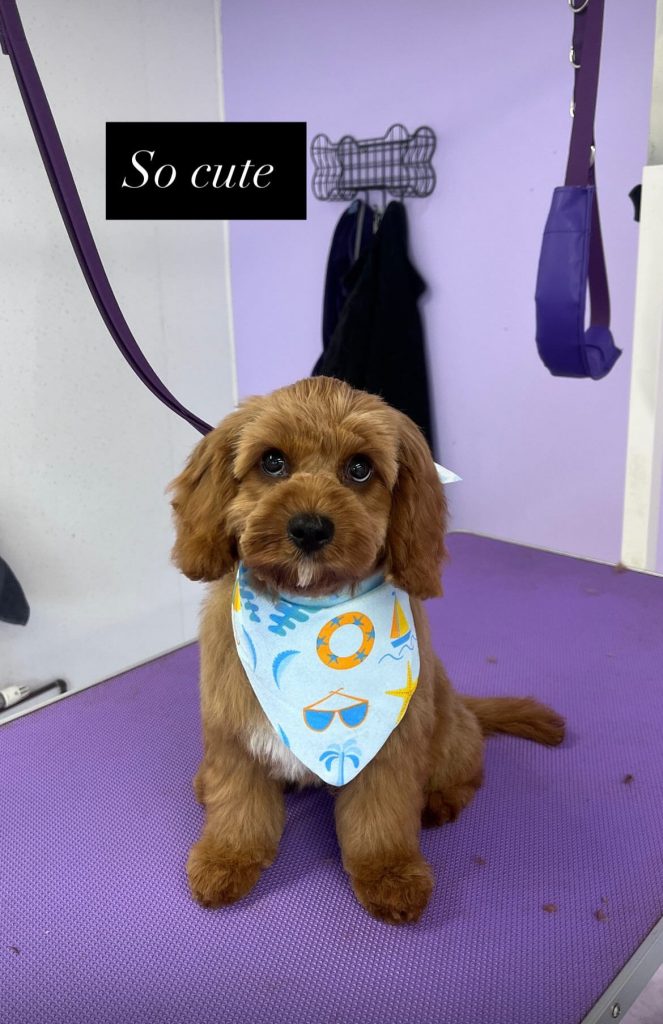
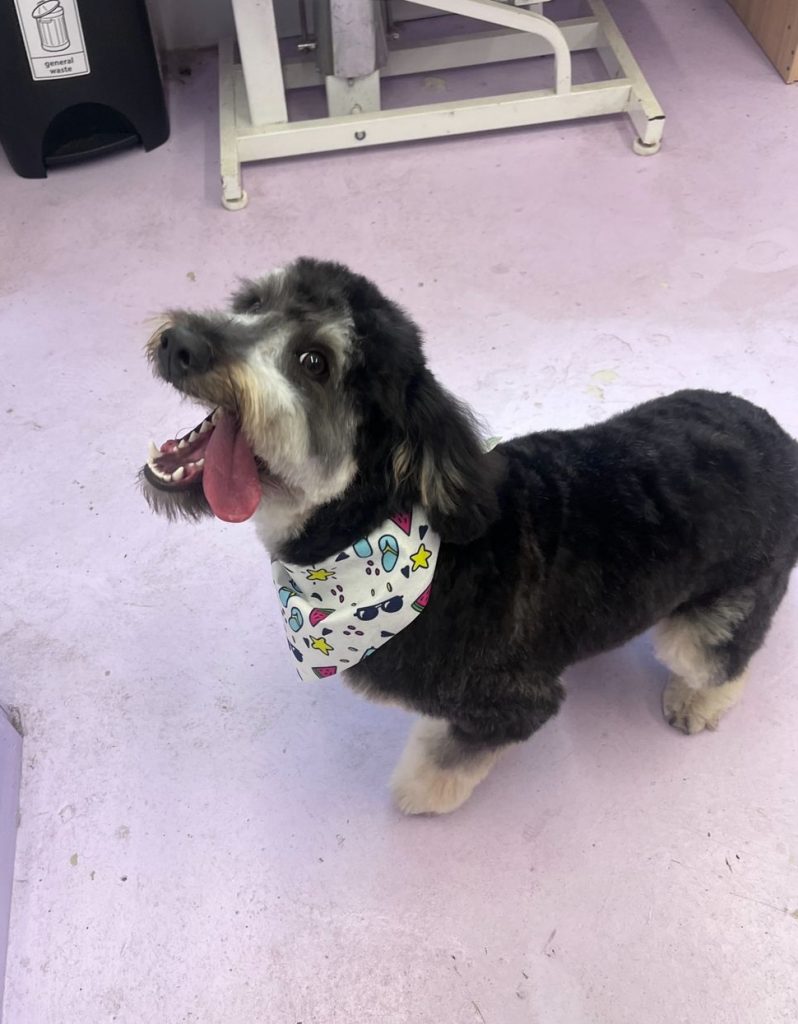
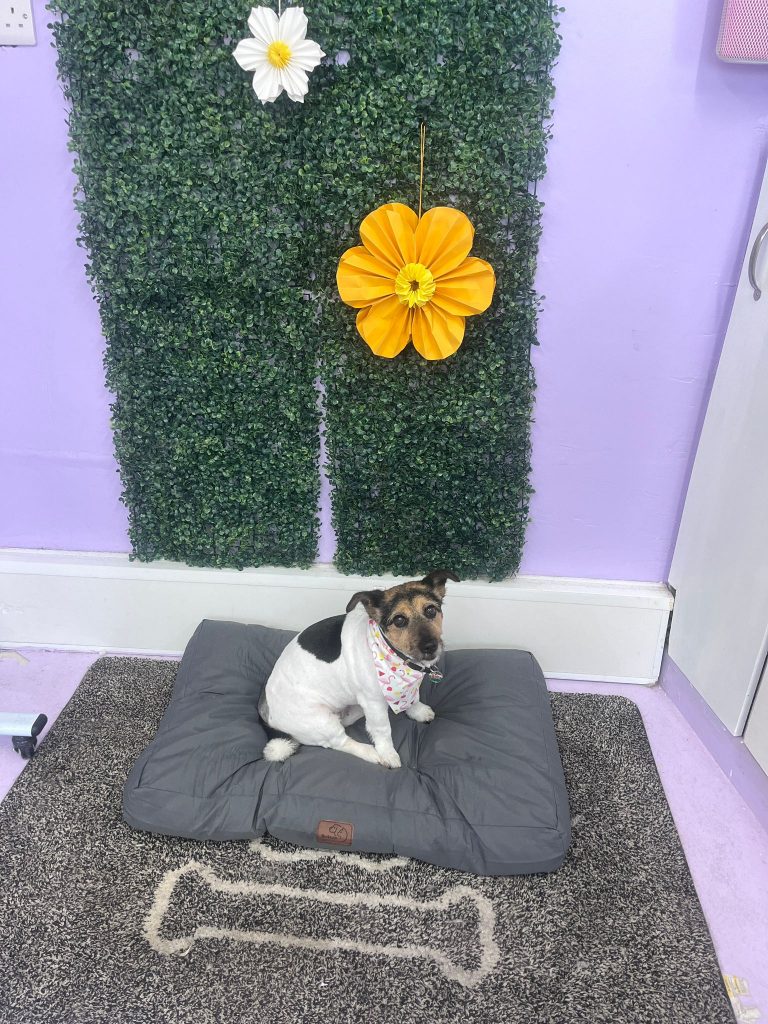
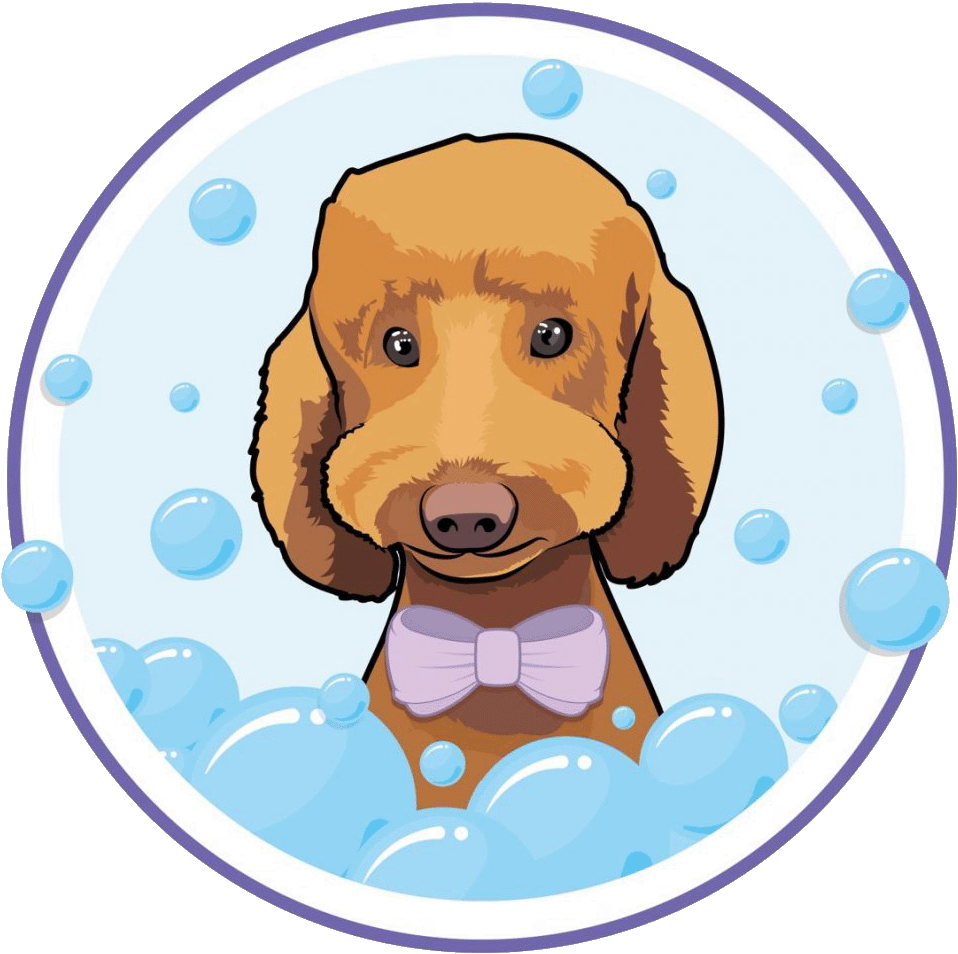
Book your dog’s pamper now…
To book your appointment, please click on the button below and select the pampering service and time-slot preferred for your dog.
